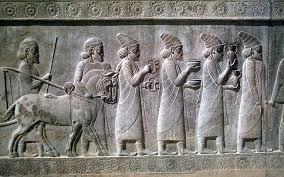We might take our morning avocado toast or side of guac for granted, but beneath that creamy green goodness lies a deep and fascinating story—one that spans more than 11,000 years.
Dr. Heather B. Thakar, an anthropological archaeologist at Texas A&M University, is leading groundbreaking research into the origins of avocado domestication. Her findings, published in Proceedings of the National Academy of Sciences, reveal how ancient communities in Central America carefully cultivated one of the world’s most beloved fruits—thousands of years before the rise of modern agriculture.
“Our work at El Gigante is revealing how humans adapted and innovated with avocados in response to a changing climate,” said Thakar. “This kind of historical insight can inform how we grow and manage crops today.”
Avocado Origins at El Gigante Rockshelter
Located in the highlands of western Honduras, El Gigante Rockshelter is one of the rare tropical archaeological sites where organic plant material has been remarkably well preserved. For over 11 millennia, the shelter has stored layers of botanical remains—offering researchers a rare look at how humans shaped their ecosystems long before industrial agriculture.
“It’s incredibly rare to find this level of plant preservation in the tropics,” Thakar noted. “The site gives us a nearly continuous record of how people interacted with plants—especially avocados.”
Early in their evolutionary history, avocados served a very different purpose: they were a favorite snack for now-extinct megafauna like giant sloths and mammoths. When these creatures disappeared, humans took over the role of avocado dispersers and stewards. Over thousands of years, ancient farmers began selecting trees that produced larger, fleshier, and more transportable fruits.
By around 7,500 years ago, traditional forest management and seed selection had already led to noticeable improvements in avocado quality. And by 2,000 years ago, domesticated avocados were being cultivated regularly—well before staple crops like maize, beans, or squash became widespread in the region.
Radiocarbon Dating and Deep Time Agriculture
To create a timeline of avocado use, Thakar’s team analyzed hundreds of radiocarbon samples, many directly from avocado pits and rinds. Their data showed a clear trend toward the selection of larger seeds and thicker rinds—hallmarks of domestication.
These findings not only push back the timeline of avocado cultivation, but also highlight how early Mesoamerican communities actively engineered their environments long before written history.
“Avocados offered rich, fatty nutrition and were relatively easy to grow and manage,” said Thakar. “They became an essential part of the human diet and culture in the region.”
El Gigante also contains early evidence of squash and maize domestication, providing an even broader perspective on ancient agricultural innovation. Thakar is currently preparing a separate publication that traces 4,500 years of maize development at the site.
A Site of Global Significance
El Gigante is now recognized as one of the most important archaeological discoveries in Central America in the last four decades. It is currently under review for UNESCO World Heritage status. Thakar and her team are actively working with the Honduran government to preserve and promote the site.
“All of our research supports El Gigante’s UNESCO nomination,” said Thakar. “We’re providing documentation, expert analysis, and historical context to protect this incredible place.”
Despite its relative isolation—which has protected it from looting—the site has experienced minor modern disturbances. Yet its deepest, oldest layers remain intact, preserving vital evidence of ancient human ingenuity.
Lessons for Today’s Agriculture
Thakar’s work isn’t just about the past—it has urgent implications for the future of food. In an era of monocultures and climate uncertainty, the genetic diversity preserved in wild avocados could be key to creating more resilient crops.
“We’re relying too much on cloning in modern avocado farming,” she explained. “By reintroducing ancient varieties and learning from traditional practices, we can create avocados—and agricultural systems—that are better equipped for future challenges.”
As a leading expert in ancient agriculture, Thakar also studies crop domestication and knowledge transmission in southern Mexico, Belize, and Nicaragua. Her work bridges science and the humanities, using tools like radiocarbon dating, stable isotope analysis, and morphometrics to unlock secrets buried deep in the soil.
Why the History of Guac Matters
“Domestication wasn’t a one-time event—it was a long, dynamic process,” Thakar emphasized. “The food we eat today is the result of millennia of human innovation, observation, and experimentation.”
By unearthing the stories behind ancient crops like avocados, researchers like Thakar are not only enriching our understanding of the past—they’re offering practical tools for creating a more secure and sustainable food future.







